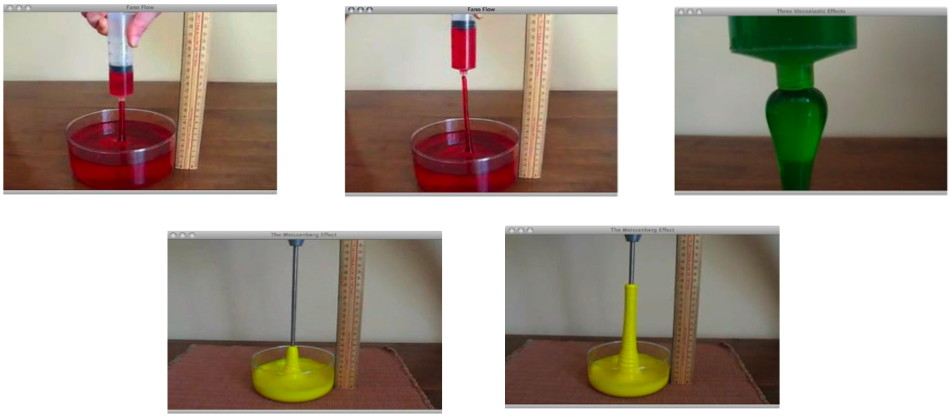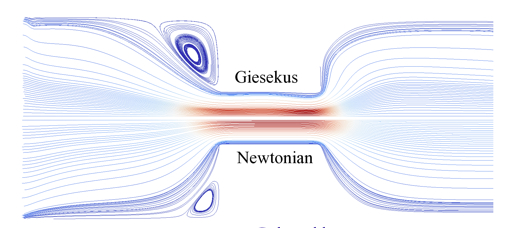Section: Application Domains
Viscoelastic flows
Polymeric fluids are, from a rheological point of view, viscoelastic non-Newtonian fluids, see Figure 3 . Their specific behavior can be observed in a variety of physical phenomena, which are unseen with Newtonian liquids and which cannot be predicted by the Navier-Stokes equations. The better known examples include the rod climbing Weissenberg effect, die swell and extrusion instabilities (cf. fig. 1). The rheological behavior of polymers is so complex that many different constitutive equations have been proposed in the literature in order to describe these phenomena, see for instance [72] . The choice of an appropriate constitutive law is still a central problem. We consider realistic constitutive equations such as the Giesekus model. In comparison to the classical models used in CFD, such as UCM or Oldroyd B fluids, the Giesekus model is characterized by a quadratic stress term. It is important to understand the theoretical properties of the Giesekus model. As outlined above, energy estimates are crucial for the development of robust numerical schemes, see also the recent work on similar questions in the EPI MICMAC [51] , [64] .
Our aim is to develop new algorithms for the discretization of
polymer models, which should be efficient and robust for
|
The result of a computation of a 4:1-contraction, comparing
Newtonian flow with Giesekus model, is shown in
Figure 4 . In the same figure, a comparison of the
computed profile in the channel with the one obtained by the
PolyFlow®, both on a relatively
coarse mesh, is shown. A precise study shows that the results are
in good agreement for moderate Weissenberg numbers
Further improvements are expected from the use of adaptivity, as well as from the implementation of adequate iterative solvers. The long-term goal is to successively build up robust and efficient software tools in order to tackle design problems, such as the design of mixing devices.





